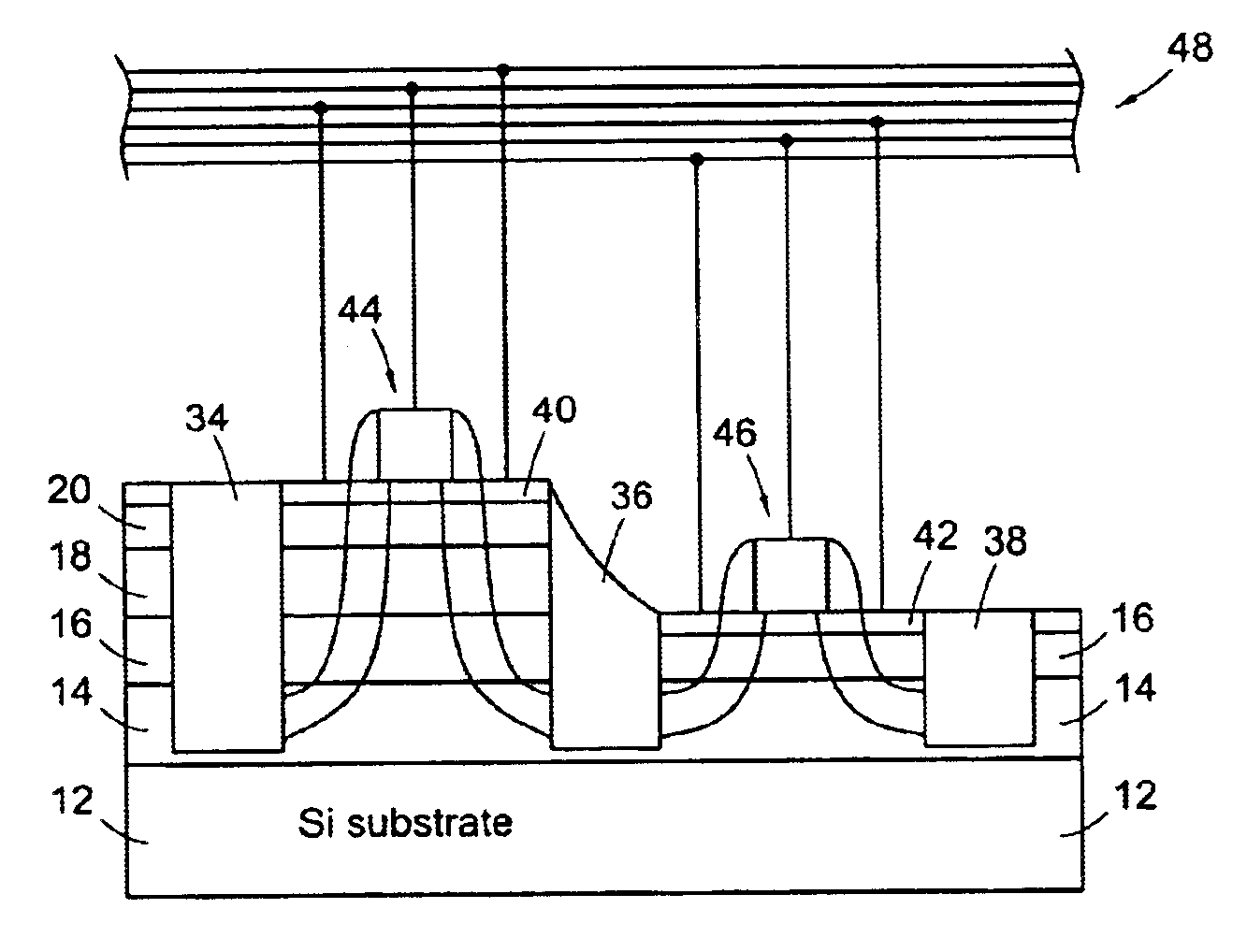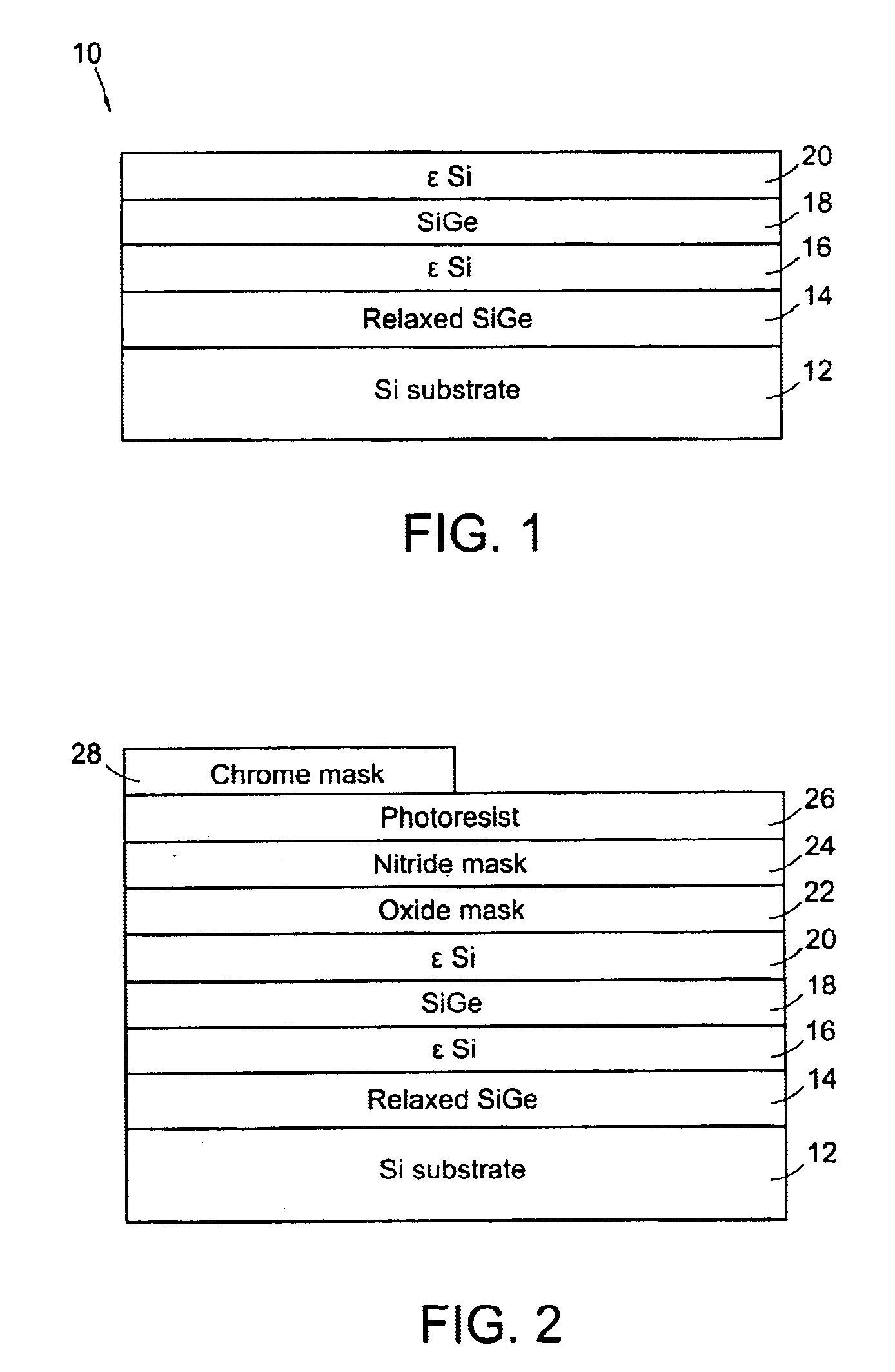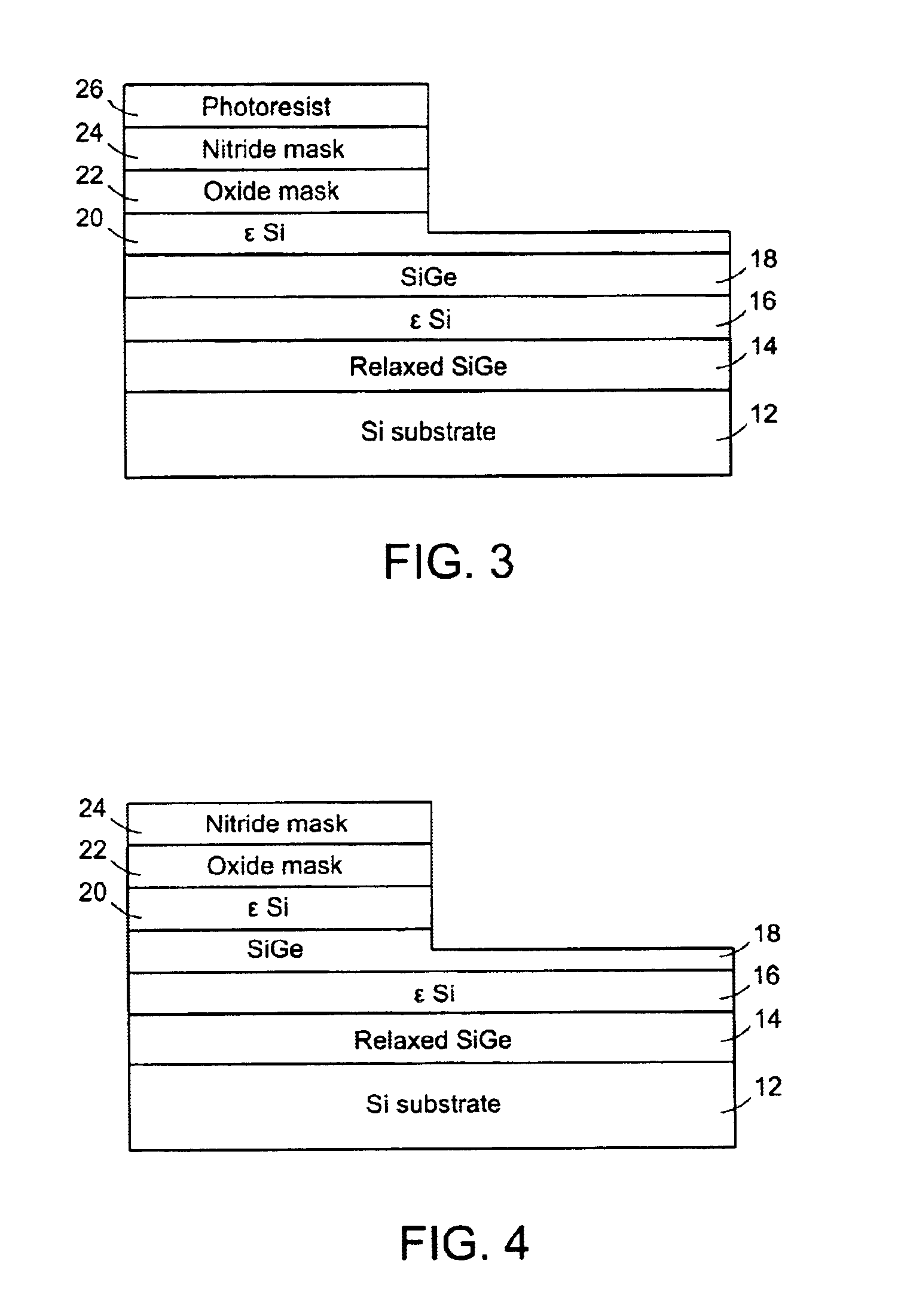Method of selective removal of SiGe alloys
a technology of sige alloys and alloys, applied in the direction of semiconductor devices, basic electric elements, electrical equipment, etc., can solve the problems of low power, high speed, and low noise requirements, and achieve the effect of reducing the number of mosfet devices, and reducing the cost of mosfet devices
- Summary
- Abstract
- Description
- Claims
- Application Information
AI Technical Summary
Problems solved by technology
Method used
Image
Examples
Embodiment Construction
[0016]The invention provides a simplified method of forming buried and surface channel heterostructure devices on the same substrate. As aforementioned, conventional Si based integrated buried and surface channel devices are typically manufactured using complex implantation procedures. In the present invention, the starting substrate material defines the buried and surface channel device structures. This starting material is a heterostructure where the the different materials in the heterostructure have different oxidation or removal properties. The difference in material properties allows for the selective removal of particular layers and this allows for the integration of varied device structures.
[0017]An exemplary embodiment of such a heterostructure substrate is a strained silicon substrate. A strained silicon (Si) substrate is generally formed by providing a relaxed SiGe layer on bulk Si through either epitaxial deposition or wafer bonding, and then providing a Si layer on the ...
PUM
 Login to View More
Login to View More Abstract
Description
Claims
Application Information
 Login to View More
Login to View More - R&D
- Intellectual Property
- Life Sciences
- Materials
- Tech Scout
- Unparalleled Data Quality
- Higher Quality Content
- 60% Fewer Hallucinations
Browse by: Latest US Patents, China's latest patents, Technical Efficacy Thesaurus, Application Domain, Technology Topic, Popular Technical Reports.
© 2025 PatSnap. All rights reserved.Legal|Privacy policy|Modern Slavery Act Transparency Statement|Sitemap|About US| Contact US: help@patsnap.com



